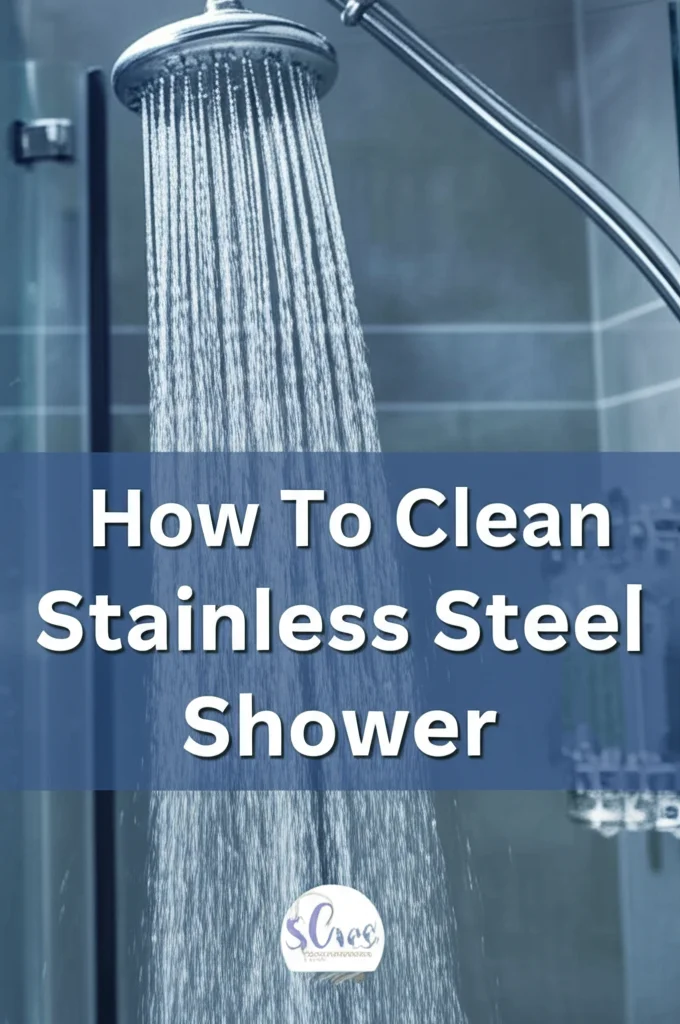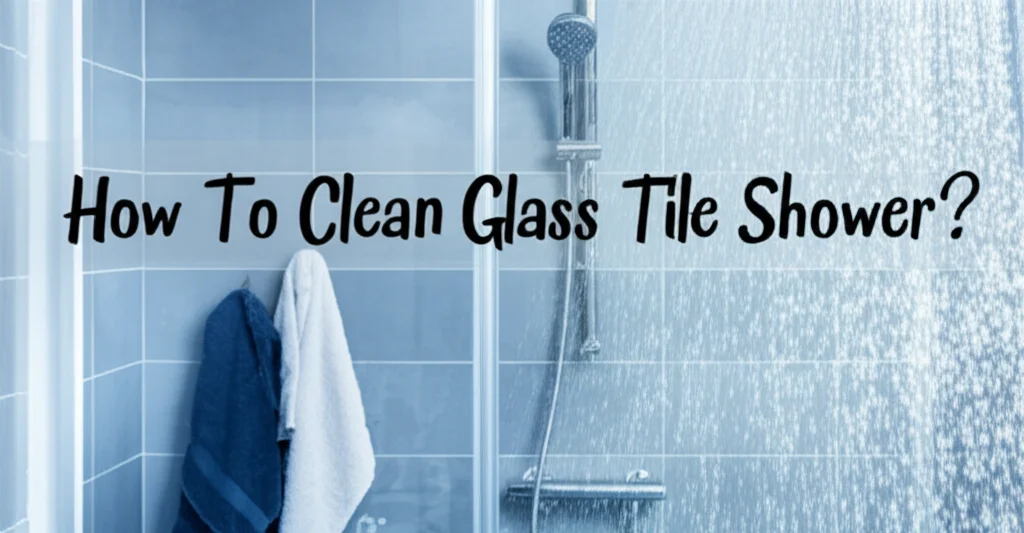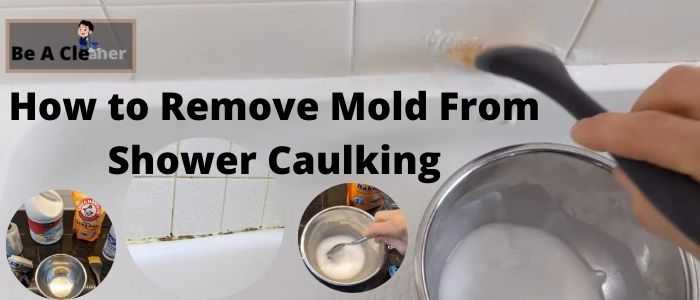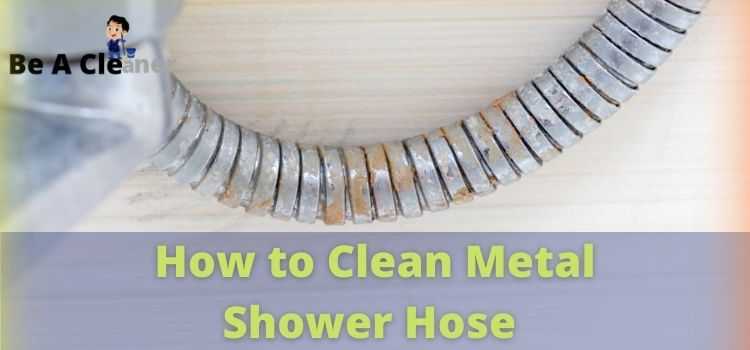· Bathroom Cleaning · 6 min read
How To Clean Stainless Steel Shower

Sparkling Clean: How To Clean Your Stainless Steel Shower
Is your stainless steel shower looking a little dull? Don’t worry, it happens! Stainless steel is a fantastic material for showers – durable and stylish – but it does require some attention to keep it looking its best. This article will guide you through everything you need to know about how to clean stainless steel showers, from daily maintenance to tackling tough stains. We’ll cover the best cleaning solutions, techniques, and preventative measures to ensure your shower stays gleaming for years to come. Let’s get started and restore that showroom shine!
Quick Answer: To clean a stainless steel shower, use a mixture of warm water and mild dish soap. Apply with a soft cloth, rinse thoroughly, and dry with a microfiber towel to prevent water spots. For tougher stains, vinegar or a stainless steel cleaner can be used.
Takeaway:
- Regular cleaning prevents buildup.
- Always rinse and dry thoroughly.
- Use non-abrasive cleaners to avoid scratches.
Why Stainless Steel Showers Need Specific Cleaning
Stainless steel, despite its name, can stain and corrode if not properly cared for. Hard water deposits, soap scum, and even certain cleaning products can leave unsightly marks. Unlike some materials, stainless steel is prone to water spots, which can quickly diminish its shine. Understanding these vulnerabilities is the first step to maintaining a beautiful shower. Proper cleaning isn’t just about aesthetics; it also extends the life of your shower components.
Daily Maintenance: Preventing Build-Up
The easiest way to keep your stainless steel shower clean is to practice daily maintenance. This doesn’t require a lot of effort, but it makes a huge difference. After each shower, quickly squeegee the walls and door to remove excess water. This simple step prevents water spots from forming. You can also wipe down the surfaces with a clean, dry microfiber cloth. This prevents soap scum and mineral deposits from building up over time.
The Best Cleaning Solutions for Stainless Steel
Choosing the right cleaning solution is crucial. Harsh chemicals can damage the finish of your stainless steel. Here are some effective and safe options:
- Mild Dish Soap and Warm Water: This is your go-to for everyday cleaning. It’s gentle yet effective at removing soap scum and light grime.
- White Vinegar: Vinegar is a natural disinfectant and excellent for dissolving hard water stains. Dilute it with water (1:1 ratio) before use.
- Stainless Steel Cleaner: Specifically formulated for stainless steel, these cleaners offer a deeper clean and often include polishing agents. Always follow the manufacturer’s instructions.
- Baking Soda Paste: For stubborn stains, create a paste of baking soda and water. Apply, let sit for a few minutes, and gently scrub. Be careful not to scrub too hard, as baking soda can be mildly abrasive.
Avoid using abrasive cleaners like scouring powders, steel wool, or bleach, as these can scratch and damage the surface. You might also want to avoid cleaners containing chlorides, as they can cause corrosion. If you’re unsure, always test the cleaner in an inconspicuous area first.
Step-by-Step Guide to Cleaning Your Stainless Steel Shower
Now that you know what to use, let’s get cleaning! Here’s a step-by-step guide:
- Prepare the Area: Remove any loose items from the shower.
- Apply the Cleaning Solution: Spray or apply your chosen cleaning solution to the stainless steel surfaces.
- Let it Sit: Allow the solution to sit for a few minutes to loosen dirt and grime. For vinegar, 5-10 minutes is usually sufficient.
- Gentle Scrubbing: Use a soft cloth, sponge, or microfiber towel to gently scrub the surfaces. Work in the direction of the grain of the stainless steel to avoid scratches.
- Rinse Thoroughly: Rinse the shower with clean water, ensuring all traces of the cleaning solution are removed.
- Dry Completely: Dry the surfaces with a clean microfiber towel. This prevents water spots and restores the shine. Don’t skip this step!
For particularly stubborn stains, you may need to repeat the process or use a slightly stronger cleaning solution. If you’re dealing with rust, a specialized rust remover for stainless steel might be necessary. You can find more information on rust removal here.
Dealing with Specific Stains & Issues
Different stains require different approaches. Here’s how to tackle some common problems:
- Water Spots: Vinegar is your best friend here. Spray diluted vinegar onto the spots, let sit for a few minutes, and wipe clean.
- Soap Scum: Dish soap and warm water are usually effective. For heavier buildup, try a commercial soap scum remover specifically designed for stainless steel.
- Rust: Use a stainless steel rust remover, following the product instructions carefully. Avoid abrasive scrubbers.
- Hard Water Deposits: Vinegar is again the solution. For severe deposits, you may need to let the vinegar sit for a longer period.
- Fingerprints: A simple wipe down with a microfiber cloth is usually enough to remove fingerprints.
Remember to always test any cleaning solution in an inconspicuous area before applying it to the entire shower. If you’re struggling with mold or mildew, check out this guide on how to remove mold from shower caulking.
Protecting Your Stainless Steel Shower: Preventative Measures
Once you’ve cleaned your shower, take steps to protect it and prevent future buildup. Consider these preventative measures:
- Install a Water Softener: If you have hard water, a water softener can significantly reduce mineral deposits.
- Improve Ventilation: Proper ventilation helps reduce moisture buildup, which can contribute to soap scum and mildew growth.
- Regular Squeegeeing: As mentioned earlier, squeegeeing after each shower is a simple yet effective preventative measure.
- Protective Coatings: Some products create a protective barrier on stainless steel, making it easier to clean and preventing water spots.
- Avoid Harsh Chemicals: Stick to gentle cleaning solutions to preserve the finish of your shower.
FAQ: Your Stainless Steel Shower Cleaning Questions Answered
Q: Can I use bleach on my stainless steel shower? A: No, bleach can damage and corrode stainless steel. It’s best to avoid it altogether and opt for gentler cleaning solutions like dish soap, vinegar, or a stainless steel cleaner.
Q: What’s the best way to dry a stainless steel shower to prevent water spots? A: The best way is to use a clean, dry microfiber towel. Microfiber is highly absorbent and won’t leave streaks or lint.
Q: How often should I deep clean my stainless steel shower? A: A deep clean every 1-2 months is generally sufficient, depending on usage and water hardness. Daily maintenance will reduce the need for frequent deep cleaning.
Q: Will vinegar damage my stainless steel shower? A: Diluted vinegar (1:1 with water) is generally safe for stainless steel. However, avoid using undiluted vinegar or letting it sit for extended periods, as it can potentially cause etching.
Conclusion: Enjoy a Sparkling Stainless Steel Shower
Cleaning your stainless steel shower doesn’t have to be a daunting task. By following these simple tips and techniques, you can keep your shower looking its best for years to come. Remember that regular maintenance is key, and choosing the right cleaning solutions is crucial. A little effort goes a long way in preserving the beauty and longevity of your stainless steel shower. So, go ahead and give your shower the TLC it deserves – you’ll be rewarded with a sparkling clean and inviting space! For more bathroom cleaning tips, explore our guide on how to clean white patches on bathroom tiles.




